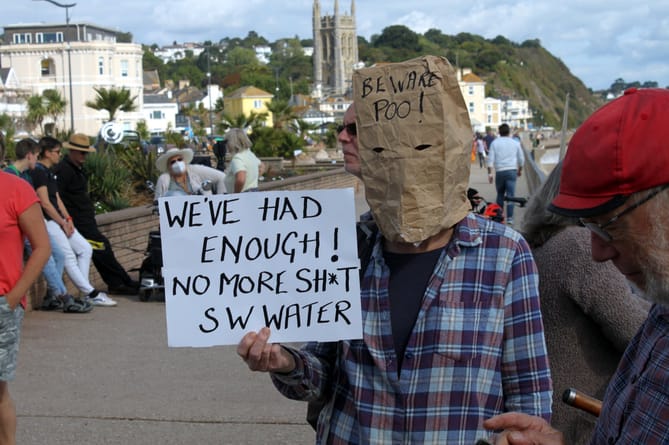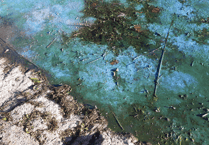THE bathing water season has started today with regular testing of water quality from the Environment Agency now underway at 150 designated bathing sites across Devon and Cornwall.
Throughout the season, which runs from 15 May until the end of September, the Environment Agency will regularly monitor water quality at bathing waters across the country to give bathers the up-to-date information they need.
High standards of water quality at swimming locations are important for people’s enjoyment of beaches and other beauty spots in England. The beaches monitored by the Environment Agency in Teignbridge include: Teignmouth Town Beach, Shaldon, Ness Cove, Holcombe, Coryton Cove, Dawlish Town Beach, Dawlish Warren and Maidencombe.
The bathing season has started amid a rocky year for South West Water, the Westcountry's water provider. In April, the utilities company was fined more than £2 million for a series of environmental offences across Devon and Cornwall spanning a period of four years. It was the largest ever fine imposed for environmental offences in the region.
South West Water has also been criticised for its extensive use of sewage discharge points, which release raw sewage into Devon's waterways after storms. Last weekend, rain over the coronation triggered the discharge of sewage into Teignbridge's waterways, affecting Dawlish Town Beach on Saturday, and Teignmouth Holcombe Beach on both Saturday morning and Monday evening.
According to Top of the Poops, an organisation monitoring sewage discharges across the UK, the Central Devon constituency was the seventh worst for sewage dumps last year, with over 4,500 separate sewage dumps, amounting to over 43,000 hours of sewage pumping.
South West Water's pollution record triggered a rally last year, organised by Councillor Martin Wrigley.

It's hoped that the monitoring also means the Environment Agency can assess whether extra action is needed to address water quality at these sites. Dips in water quality can also occur due to factors like rainfall, wind and high tides.
Information on all 424 designated bathing water sites nationally and any forecasted drops in water quality will be published on the Swimfo: Find a Bathing Water website. This provides immediate access to information on every bathing water in England, including coastal locations, inland lakes and the newly designated areas, such as Firestone Bay in Plymouth.
The Environment Agency works with local authorities to ensure signs at these swimming locations to inform bathers about any possible dips in water quality as a result of rainfall, wind and high tides.
The Environment Agency has also driven £2.5 billion of investment and facilitated partnerships to dramatically improve bathing waters. Last year, 97.1 per cent of bathing waters met the minimum standard of Sufficient, with 92.8 per cent meeting the highest standards of Good and Excellent – the highest since new standards were introduced in 2015.
Environment Agency Chair Alan Lovell said: 'England’s much-loved beaches are an essential part of the Great British summer and many businesses and communities rely on their good health for tourism and trade.
'Our Environment Agency officers are out throughout the summer monitoring the quality of local bathing waters and we can take action if minimum standards aren’t being met. Anyone who wants to go swimming can check the results for free on the Swimfo website.

'Bathing water sites have shown enormous improvements in recent decades following significant investment and hard work. There is still more to be done to ensure cleaner and healthier waters for people to enjoy. This will require a combined effort from water companies, farmers, regulators, councils, local businesses and the general public.'
In the autumn, Defra will publish its classifications – Sufficient, Good, Excellent or Poor – for each designated bathing water site.
In response to many accusations and criticisms over the treatment of the Westcountry's water, South West Water stated: 'After listening to and talking with customers, communities and campaigners right across our region, in April we announced WaterFit, our plans to protect rivers and seas together.
‘WaterFit will dramatically reduce our use of storm overflows, maintain our region’s excellent bathing water quality standards all year round and reduce and then remove our impact on river water quality by 2030. Working with partners and customers WaterFit will begin to deliver the change we all want to see.'





Comments
This article has no comments yet. Be the first to leave a comment.